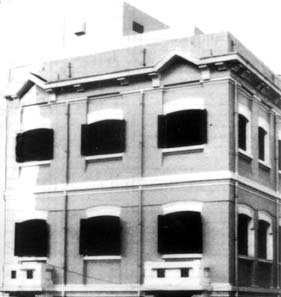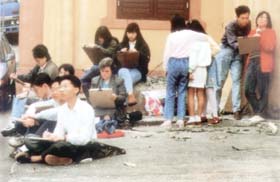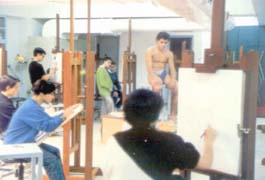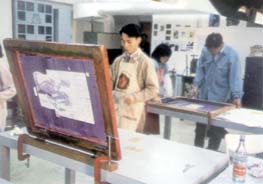The Academy of Visual Arts was opened by the Cultural Institute of Macau in September, 1989 and installed in an old building on Santo Agostinho Square. Courses are offered in Portuguese, Cantonese and sometimes in Mandarin and the studio's are well-equipped for teaching and practising painting, drawing, sculpture, screen-printing, engraving and print-making. There is a small library and photography and video courses will soon be added to the curriculum. Talks on the history of art are also offered in Portuguese and Mandarin. In addition to the permanent staff, there are occasional workshops given by renowned artists who are invited to come for this purpose from China, Hong Kong and Portugal. The first three were given by the photographer Ho Sang Wong, the print-maker Bartolomeu Cid dos Santos and the sculptor João Cutileiro. To date, more than one hundred and eighty students attend the Academy of Visual Arts.


The vast majority of people recognise the importance which art has in the life of any society. It reinforces the identity of that society, its self-respect, as well as freeing the creative potential of the members of society and allowing them to throw a new light on the collective destiny of the people.
Nevertheless, some countries and communities fail to develop the artistic side of the soul, even though it can create both material wealth and political hegemony. They have concentrated on developing the production of consumer goods. However, this utilitarian approach tends to neglect the role of musicians, artists, poets and writers who in fact can give some shape to the rhythms and pulsations which beat in the heart of the nation and are the people who celebrate body and soul.
There does not have to be an accumulation of material wealth for artistic activity to occur, although it does of course help in the process. The appreciation of art has more to do with a mysterious balance in the way societies organize themselves. It has to do with having time to live life, it has to do with tolerance, it has to do with the desire to live in harmony with the surrounding environment. Most of all, it has to do with a desire to know oneself, to question the past and the future.
Macau is a land where people and cultures have been mixing for centuries. Recent years have seen major developments in the economy but there is still a lack of institutions in which artistic expression can be nurtured and deepened. The Government of Macau is preparing a highly ambitious response to this problem and part of this response will include a College of Fine Art. A professional art school cannot provide for the needs which a community may have for artistic training. Somebody who holds a degree in art may not necessarily be artistically creative and however good he may be he might still not be fully integrated into an industrial system of production. In fact, the most normal situation is for him not to be. Yet both artists and industry are important to the society in which they operate. The training of a creative artist is not much concerned with curricula, nor with certificates and degrees. An artist is trained differently. He needs study, dialogue, protection, confrontation. Whenever possible, most artists try to schedule their own training as there is much to be learnt and few who can teach them. The artist is a self-taught man to a large extent, who makes his own path as he travels along it in response to his own interests. He will at best support with a degree of rebelliousness any pre-set menu imposed on him by his society.


There are other points to be considered, such as the case of people who only discover later on in life their artistic vocation as well as all those people who are prevented from developing their talents through lack of space, equipment or even encouragement. The Academy of Visual Arts is primarily intended for these people.
Thus, in addition to being a place of learning where techniques are passed on, the Academy is also intended to be a meeting place where people can think both about the roots of artistic creation in this part of the world and about the relations between the cultures present in Macau. •
* Member of staff in the Porto College of Fine Arts and presently employed as the Director of the Macau Academy of Visual Arts.
start p. 94
end p.